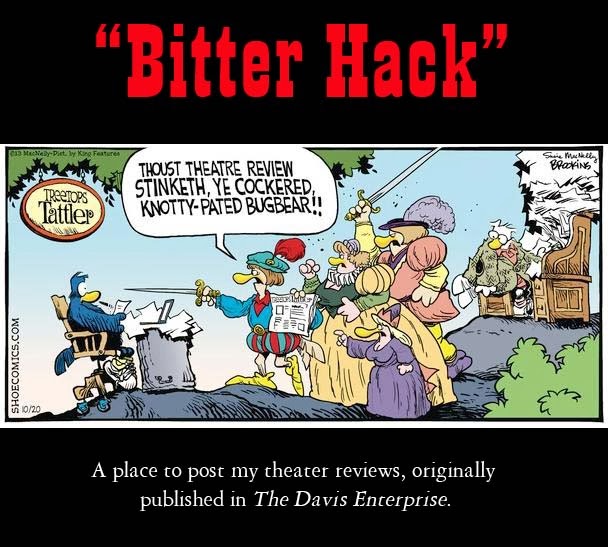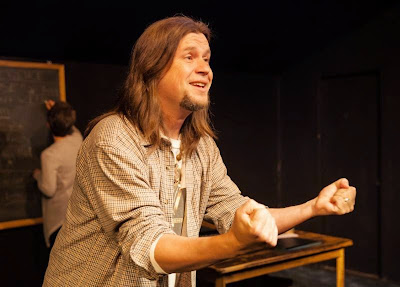Was there ever a more perfect play for a bunch of exuberant adolescents than “The Heart of Robin Hood”? Written by David Farr and directed by Emily Henderson, the production is this year’s gift to Davis by members of Acme Theatre Company, with free performances set on the Davis Arts Center stage through Monday.
Everyone knows the story of Robin Hood, right? Lovable rogue running through Sherwood Forest with his band of Merry Men, robbing from the rich to give to the poor. Wikipedia lists 68 movies either about Robin Hood or featuring Robin Hood, dating back to 1908. (They say the best of all the movies was the 1938 version featuring Errol Flynn.)
There are movies made in England, Italy, Germany, Russia, India and Japan. There are animated films, including one featuring Tom and Jerry, and another one starring vegetables.
In his “The Heart of Robin Hood,” Farr puts his own spin on the story, borrowing from Shakespeare now and then, and making it a rollicking good time. The cast members were always in motion, making use of the whole area, including the trees and the grassy hill (no need to build a prop tree when there is a real tree growing out of the stage that can be climbed!).
There were umpteen sword and/or stick fights (kudos to fight director Dan Renkin), and everybody, on and off stage, looked like they were having a marvelous time.
This is more of a feminist version, where Robin Hood (Benton Harshaw) really is an outlaw, who robs from the rich … and then keeps what he gets. But it is Marian (Callie Miller), the bored princess who is looking for adventure, who goes into the forest with her friend Pierre/Peter (William Forkin) disguised as a man (Martin of Sherwood) who helps Robin find that he really gets more satisfaction from helping the poor. (He also learns that girls aren’t so bad after all.)
Forkin has a big role, as play announcer, castle jester and Marian’s best friend. He is flamboyant as Pierre, and brave as his alter-ego, Peter.
Miller has an awful lot of on-stage time and she just gets stronger as the play progresses. She also does surprisingly quick costume changes. (It always amazes me how you can put on a hat and suddenly nobody recognizes you!)
Likewise, Harshaw is more like a big kid playing with his friends (Aaron Hirst, Tina Simpson and Camila Ortiz), but as things get more serious, he becomes more adult and responsible and, of course, his reward for that is the hand of the princess, once she takes off her hat and he can recognize her.
The man you love to hate is Colin French as the sleazy Prince John, determined to wed Marian before her father (Noah Papagni) can get home to stop the marriage. He’s deliciously evil at every turn.
Eliza Buchanan plays Alice, Marion’s social climbing sister who wants to marry well, and the more titled the better. Buchanan’s performance sneaks up on you and you suddenly realize what a very good actress she is.
Trevor Rinzler and Sky Falyn play siblings Jethro Summers and Sarah Summers. I’m not sure if Rinzler is old enough to be in Acme yet. Falyn definitely is not, but both of them were extremely good as the children of a man ultimately hanged for non-payment of taxes. Their dog Plug (Sarah Zaragoza-Smith) gave the perfect salute on the death of Prince John’s hitman, Guy of Gisbourne (Ricky Houck).
“The Heart of Robin Hood” is fast, fantastic, fabulous fun, presented by a group of young actors who know just what they’re doing. They give the audience a simply splendid time.
Temperatures were cold on opening night, so dress warmly, but Acme also has blankets to lend if you need them. There is a pre-show barbecue, and at intermission there are cookies and hot chocolate for those who want them.








